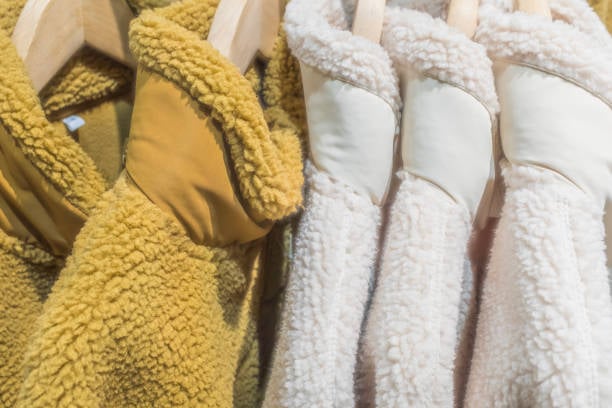The History of Flannel Fabric
Flannel fabric has a long and fascinating history that dates back centuries. It originated in Wales, where it was traditionally made from 100% wool. The word "flannel" itself is derived from the Welsh word "gwalnen," which means woolen cloth. Over time, flannel fabric gained popularity and was produced in various parts of the world, including Scotland and the United States. Today, flannel fabric is widely used for its warmth, comfort, and versatility.
Understanding Flannel Fabric
Flannel fabric is a soft and fuzzy textile that is typically woven in a twill or plain weave. It is known for its brushed surface, which gives it a slightly fluffy feel. The brushed finish is achieved by lightly scraping the fabric with fine metal brushes, creating a raised nap that traps air and provides insulation. Flannel fabric can be made from various fibers, including wool, cotton, or synthetic blends. While wool flannel is warm and luxurious, cotton flannel is lightweight and breathable, making it suitable for a wider range of climates.
The Characteristics of Flannel Fabric
Flannel fabric has several distinctive characteristics that set it apart from other textiles. Firstly, it has excellent insulating properties, making it ideal for cold weather garments and bedding. The brushed surface of flannel fabric also enhances its ability to retain heat. Additionally, flannel fabric is highly absorbent and wicks away moisture, making it comfortable to wear. It is also known for its durability, as the brushing process strengthens the fabric and reduces pilling.
Types of Flannel Fabric
There are various types of flannel fabric available, each with its own unique properties. Traditional wool flannel is thick, warm, and often used for outerwear, suits, and blankets. Cotton flannel, on the other hand, is lightweight, breathable, and commonly used for shirts, pajamas, and bedding. Flannel can also be made from synthetic fibers, such as polyester or rayon, which offer additional benefits like wrinkle resistance and easy care. Some flannel fabrics are also blended with other fibers to combine the best characteristics of different materials.
Uses of Flannel Fabric
Flannel fabric is incredibly versatile and finds its way into a wide array of products. One of the most common uses of flannel is in clothing, particularly for creating warm and cozy garments. Flannel shirts are popular for their comfort and casual style, while flannel pajamas provide a comfortable sleepwear option. Flannel is also widely used in bedding, including sheets, duvet covers, and pillowcases. Its softness and warmth make it perfect for creating a cozy sleeping environment. Additionally, flannel fabric is often used to make blankets, quilts, and baby clothing.
Caring for Flannel Fabric
To ensure the longevity of flannel fabric, proper care is essential. Most flannel fabrics can be machine washed, but it is important to check the care instructions before laundering. Using a gentle cycle and cold water is usually recommended to prevent shrinking or damaging the fabric. It is also advisable to avoid using harsh detergents or bleach, as these can cause color fading and weaken the fabric fibers. After washing, flannel fabric should be tumble dried on a low heat setting or air-dried to maintain its softness and shape.
Flannel Fabric in Home Decor
Beyond clothing and bedding, flannel fabric can also be used to enhance the aesthetic appeal of your home. Flannel curtains add a touch of warmth and coziness to any room, while flannel upholstery provides a soft and inviting seating option. Flannel can also be used for making decorative pillow covers, tablecloths, and even wall hangings. Its versatility and wide range of colors and patterns make it a popular choice for interior design projects.
Choosing the Right Flannel Fabric
When selecting flannel fabric for your project, it is important to consider your specific needs and preferences. If warmth is your primary concern, opt for wool flannel. For a lighter and more breathable option, cotton flannel is the way to go. Synthetic blends offer additional benefits such as wrinkle resistance and easy care. Additionally, consider the weight of the fabric, as heavier flannel is suitable for colder climates, while lighter flannel is better for milder temperatures. Lastly, take into account the desired color, pattern, and texture to ensure the fabric complements your project perfectly.
The Timeless Appeal of Flannel Fabric
Flannel fabric has stood the test of time and continues to be a beloved textile choice for many. Its warmth, comfort, and versatility make it a staple in both fashion and home decor. From cozy flannel shirts to soft bedding, flannel fabric offers a timeless appeal that transcends trends. Whether you're looking to create a cozy winter outfit or add a touch of warmth to your living space, flannel fabric is a reliable and stylish choice.
flannel fabric, wool flannel, cotton flannel, synthetic flannel, brushed surface, insulating properties, durability, care instructions, home decor, timeless appeal
what is flannel fabric? A Comprehensive Guide
Discover the history, characteristics, uses, and care tips for flannel fabric. Learn about different types of flannel and how to choose the right one for your project. Explore the timeless appeal of this versatile textile.
Quote Inquiry

